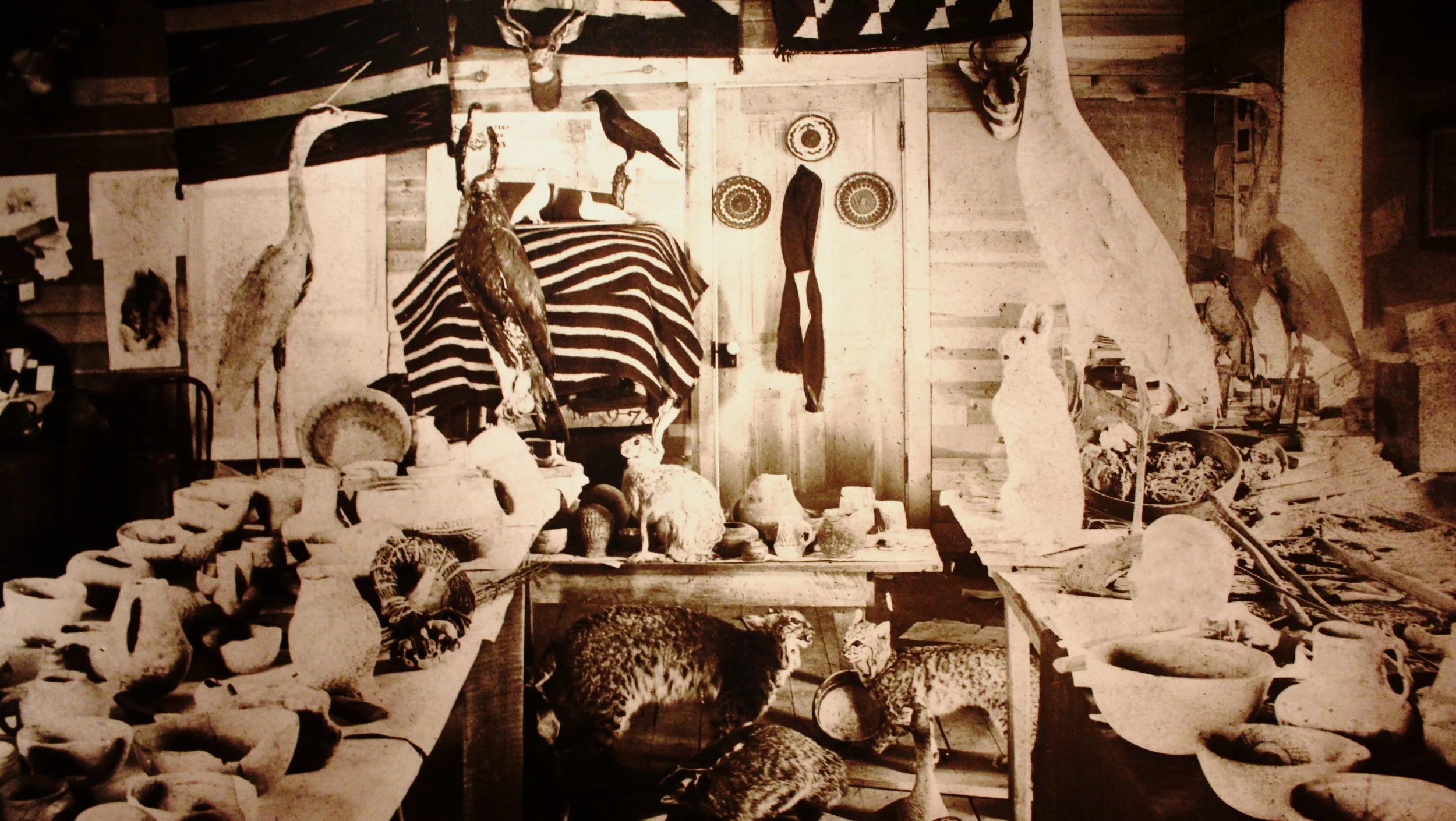
Trowels, Trading Posts, and Travelers: The Wetherill Family
Exhibit Overview
“Trowels, Trading Posts, and Travelers: The Wetherill Family” examined the lives of eight members of the Wetherill family, who were pioneers in the archaeology and economy of the southwest. This family of Quakers came to Mancos, Colorado, in the 1880s. The Wetherill family has had a broad influence in the southwest, including the "discovery" of Cliff Palace in what would become Mesa Verde National Park. Their relationships with people from all different backgrounds has long lasting impacts in southwest archaeology, trading post economies and the national monuments and national parks across the Four Corners area.
Visitor Experience
This exhibit covered the history of a complicated and large family. Visitors were immersed into the lives of one generation of the Wetherill family, using a Character Card to connect one on one to a specific family member. Visitors relate to the individuals through their everyday objects, such as shoes and letters, and appreciate the importance of the family through unique objects like a quiver found at Cliff Palace. Oversized historic photographs invite the visitor to imagine stepping right into the picture and back in time. This exhibit is history based and story driven, with objects and photographs used to enrich visitor experience.
Themes and Layout
The Wetherill family story was divided it into four main themes:
1. Background of the Wetherill family/Alamo Ranch in Mancos
2. Pioneers of Archaeology
3. Agents of Economic Change/Trading Posts
4. Wetherill family legacy
The layout of the exhibit was based upon these narrative themes: movable walls were used to create four distinct spaces. A large case was constructed using existing vitrines and a newly designed base to replicate a trading post display. Large historic photographs enhance the immersive qualities of the spaces.
Fonts and Colors
Bodoni and Cambria fonts were used to convey a timeless atmosphere. Bodoni was used for headings while Cambria was used for body text.
The colors used in this exhibit were designed to enhance the sepia tones of the historic photographs. Sage green, teal blue, and a pale sepia were used in the interpretive panels, educational brochures, and promotional materials. Paint colors of pale sepia and oxblood provided a rich yet neutral backdrop for oversized historic photographs and interpretive panels.
Label Hierarchy
A four part label hierarchy was used in this exhibit:
Panels introduce subthemes. 75 to 200 words.
Photo captions give context to the large historic photographs. 10 to 75 words.
Case labels describe the objects places in the overall story. 25 to 100 words.
Object labels provide specific catalog number and donor information for each object. Minimal words
For a Google 360 degree view of the exhibit entrance space, click here.
For a Google 360 degree view of the trading post area, click here.

Introductory Panel

Introductory panel, which also introduces the Character Card activity

Character card front and back

Character card front and back

Character card front and back

Interpretive panel

Interpretive panel

Interpretive panel

Interpretive panel

Exhibit overview

Trading post vignette

Exhibit layout











